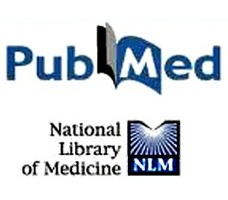 Cannabinoid receptor signaling in progenitor/stem cell proliferation and differentiation.
Cannabinoid receptor signaling in progenitor/stem cell proliferation and differentiation.
Source
Department of Biochemistry and Molecular Biology I, School of Biology, Complutense University, IUIN, CIBERNED and IRYCIS, 28040 Madrid, Spain. Electronic address: igr@quim.ucm.es.
Abstract
Copyright © 2013. Published by Elsevier Ltd.
KEYWORDS:
2-AG, 2-arachidonoylglycerol, AEA, BDNF, CBD, CBG, CFU-GEMM, CREB, CSF, DAGL, ECB, ECS, ERK, ES, FAAH, FGF, GAD, GSK3β, HPC, HSC, ICM, L1-CAM, L1-cell adhesion molecule, MAGL, N-arachidonoylethanolamine, N-oleoylethanolamine, N-palmitoylethanolamine, NCAM, NGF, NP, OEA, PEA, PI3K, PKA, PPARγ, RANKL, Receptor activator of nuclear factor kappa-B ligand, SVZ, THC, VZ, brain derived neurotrophic factor, cAMP response element-binding protein, cannabidiol, cannabigerol, colony-forming unit: granulocyte, erythrocyte, macrophage, megakaryocyte, colony-stimulating factors, diacylglycerol lipase, embryonic stem, endocannabinoid, endocannabinoid system, extracellular-signaling regulated protein kinase, fatty acid amide hydrolase, fibroblast growth factor, glutamate decarboxylase, glycogen synthase kina, hematopoietic progenitor cells, hematopoietic stem cells, inner cell mass, mGluR, mTORC1, mammalian target of rapamycin complex 1, metabotropic glutamate receptors, monoacylglycerol lipase, nerve growth factor, neural cell adhesion molecule, neural progenitor/stem cell, peroxisome proliferator activated receptors, phosphoinositol 3-kinase, protein kinase-A, subventricular zone, vGlut, ventricular zone, vesicular glutamate transporter, Δ(9)-tetrahydrocannabinol
- PMID:
24076098
[PubMed – as supplied by publisher]
LinkOut – more resources
Full Text Sources
Keywords
- Cell commitment;
- Cell survival;
- Endocannabinoids;
- Membrane receptors;
- Niche cues;
- Protein kinases;
- Transcription factors
Abbreviations
- 2-AG, 2-arachidonoylglycerol;
- AEA, N-arachidonoylethanolamine;
- BDNF, brain derived neurotrophic factor;
- CBD, cannabidiol;
- CBG, cannabigerol;
- CFU-GEMM, colony-forming unit: granulocyte, erythrocyte, macrophage, megakaryocyte;
- CREB, cAMP response element-binding protein;
- CSF, colony-stimulating factors;
- DAGL, diacylglycerol lipase;
- ECB, endocannabinoid;
- ERK, extracellular-signaling regulated protein kinase;
- ES, embryonic stem;
- ECS, endocannabinoid system;
- FAAH, fatty acid amide hydrolase;
- FGF,fibroblast growth factor;
- GAD, glutamate decarboxylase;
- GSK3β, glycogen synthase kina;
- ICM, inner cell mass;
- HSC, hematopoietic stem cells;
- HPC, hematopoietic progenitor cells;
- L1-CAM, L1-cell adhesion molecule;
- MAGL, monoacylglycerol lipase;
- mGluR, metabotropic glutamate receptors;
- mTORC1,mammalian target of rapamycin complex 1;
- NCAM, neural cell adhesion molecule;
- NGF, nerve growth factor;
- NP, neural progenitor/stem cell;
- OEA, N-oleoylethanolamine;
- PEA, N-palmitoylethanolamine;
- PI3K,phosphoinositol 3-kinase;
- PKA, protein kinase-A;
- PPARγ, peroxisome proliferator activated receptors;
- RANKL, receptor activator of nuclear factor kappa-B ligand;
- SVZ, subventricular zone;
- THC, Δ9-tetrahydrocannabinol;
- vGlut, vesicular glutamate transporter;
- VZ, ventricular zone
Figures and tables from this article:
-
Fig. 2.
Metabolism of eCBs. Red and green arrows represent the activation and inactivation steps, respectively. 1-Synthesis. AEA and 2-AG are released on demand from membrane lipids, through the activity of NAPE-PLD and DAGL, respectively; 2-Transport. AEA and 2-AG move across the plasma membrane via a purported EMT; 3-Action. Targets of AEA and 2-AG are CB1 and CB2, that show an extracellular binding site. AEA also binds to type-1 vanilloid receptor (TRPV1) that bears an intracellular binding site. Once eCBs bind to their target receptors, different signaling pathways can be activated depending on the cellular environment; 4. Reuptake. After their actions, eCBs are taken up by EMT for inactivation; 5-Inactivation. AEA is hydrolyzed by FAAH to ethanolamine and arachidonic acid, whereas 2-AG is hydrolyzed by MAGL and to a minor extent by FAAH, that releases glycerol and arachidonic acid. Moreover, AEA and 2-AG are also oxidized by cyclooxygenase-2, lipoxygenases and cytochrome P450, to produce prostaglandins and hydroxyl-derivatives (omitted for the sake of clarity). See text for details.
-
Fig. 4.
Cannabinoid signaling in the blastocyst. The blastocyst is composed of an inner cell mass (embryoblast), which is the source of embryonic stem cells and subsequently forms the embryo, and an outer layer of cells, the trophoblast, which later on forms the placenta. Pluripotent embryonic stem cells form embryonic stem cell aggregates (termed embryoid bodies), which contain a number of different cell types that give rise to all three germ layers of the developing embryo (endoderm, mesoderm and ectoderm). Early disruption of the pluripotent network of embryonic stem cells generates a population of trophoblast stem cells, which provide the precursors of the trophoblast. eCBs influence proliferation and differentiation of both embryonic stem cells and trophoblast stem cells at multiple levels. See text for details and abbreviations.
-
Fig. 5.
Expression of the ECS elements, and origin of AEA/2-AG tone in NP cells. (A) Dynamic regulation of the expression levels of ECS elements along neuronal differentiation during cortical development. (B) Metabolic pathways involved in the synthesis of the eCBs AEA and 2-AG in NP cells. See text for details.
-
Fig. 6.
Summary of cell fate decisions of neural progenitors and differentiating cells regulated by the ECS. The eCB-binding receptors and eCB-metabolic enzymes shown to be involved in the regulation of (A) NP proliferation, (B) neuronal and glial differentiation and (C) neuronal morphogenesis are indicated. Neurochemical markers associated to CB1 activity in developing neurons are shown in (C). See text for details and abbreviations.

- Corresponding authors. Address: Center of Integrated Research, Campus Bio-Medico University of Rome, Via Alvaro del Portillo 21, 00128 Rome, Italy. Tel.: +39 06 2254 19169; fax: +39 06 2254 1456 (M. Maccarrone). Tel.: +34 91 394 4668; fax: +34 91 394 4672 (I. Galve-Roperh).
- 1
- These authors contributed equally to this work.
Copyright © 2013 Elsevier Ltd. All rights reserved.













